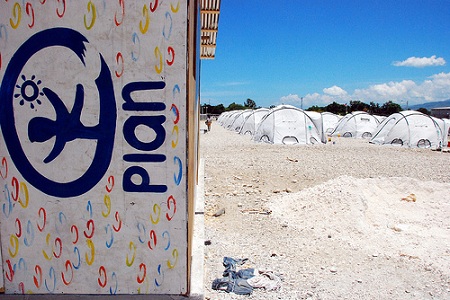
The fund development plan provides the framework for your development program. Develop a plan effectively and work that plan well. Then you’ll see a difference in attitude, accountability, and productivity. The process of creating the development plan is as important as the resulting plan. A good process produces ownership of the plan, assures shared accountability, and achieves your targeted results.
The fund development planning process is a challenge. A good process depends on the staff’s ability to enable effectively (see my previous column on enabling functions). It’s up to you. This column gives you some tips. For more details and sample plans, see the third edition of my book, Strategic Fund Development: Building Profitable Relationships That Last, published in 2011 by John Wiley & Sons.
The Big Picture
Fund development is not a separate and independent activity that can be pulled out whenever there is the need, focused on by only a few, and ignored the rest of the time. Instead, fund development is an ongoing, rewarding (but invasive) process that engages all staff and every board member in some way. Fund development affects and is affected by everything your organization does, from client service to communications to board member recruitment (but this does not mean that the only qualification for board members is the ability to raise money).
Effective organizations understand that fund development goals and strategies focus on things other than money. For example: creating a culture of philanthropy, building stronger relationships, helping board members feel comfortable with fund development, board member recruitment and training, and so forth. See, for example, the monograph on my website, “Choosing Your Road…An Organizational Development Specialist or Just Another Fundraising Technician.”
No matter what you want to raise money for, you must pay attention to process. Process means examining fund development and organizational development issues in one system. The process requires a commitment of time and energy on the part of the organization’s staff and volunteers.
The Slightly Smaller Picture
Sign up for our free newsletters
Subscribe to NPQ's newsletters to have our top stories delivered directly to your inbox.
By signing up, you agree to our privacy policy and terms of use, and to receive messages from NPQ and our partners.
What is a fund development plan? It’s closely partnered with your organization’s multi-year strategic plan. In fact, your fund development plan is one of those sub-plans that rolls out of your strategic plan. The strategic plan provides the framework and foundation for your organization’s work. Then you create a fund development plan—guided by the organization’s strategic plan—to secure the financing to support that strategic plan.
Like institutional strategic planning, good fund development planning is a process that builds organization-wide understanding of and ownership for philanthropy and fund development. Like the process of institutional planning, the best fund development planning process generates learning and change, and produces alignment and shared accountability. And, just like institutional strategic planning, effective fund development planning also produces results.
Components of the Fund Development Planning Process
The most effective fund development planning process accomplishes the following:
- Engages key stakeholders in order to gather quality information, build understanding, and enhance ownership
- Assesses the return on investment (ROI)—productivity and effectiveness—of current and proposed fund development activities
- Assesses the internal and external environments in order to respond to challenges, capitalize on opportunities, and fix stuff that needs fixing
- Ensures that volunteers (board members and other fundraising volunteers) understand the most critical principles of philanthropy and fund development
- Reaffirms values, vision, and direction
- Sets goals and strategies and tests their feasibility
- Tests the charitable contributions goal for the institution’s budget and forces adjustments to that budget as needed
- Defines measures and benchmarks
Other Important Tips for Getting Started Now
Your fund development plan belongs to the organization, not to the development office or the development staff. I like boards to adopt the fund development plan as the partnership document to the institution’s budget. And with adoption of the fund development plan, board members are committing to taking on items in the plan (see my previous column about offering a menu of choices to your board members). And remember, each and every board member must take on fund development activities. And the staff helps board members execute the work effectively.
You plan for the future in tandem with implementing current activities. As you complete each fund development activity, evaluate its results in order to make decisions for the next year and the new plan. Compare results to goals and current results to prior years. Contrast your results to standards in the industry. Decide what improvements to make or what strategies and tactics to abandon. Always remember that data alone isn’t useful. Analyze the trends and implications of your data.
Keep in mind the opportunity cost, which is too often ignored. The opportunity cost is what you are not doing because you’re doing something else. For example, so many organizations do too many fundraising events, leaving no room for personal, face-to-face solicitation. That’s the opportunity cost.
It’s never too early or too late to embrace a good process. Don’t ask permission to do it. Just do it. Others will be swept up in the energy and realize the value. Still others will just tag along. Go for it.













